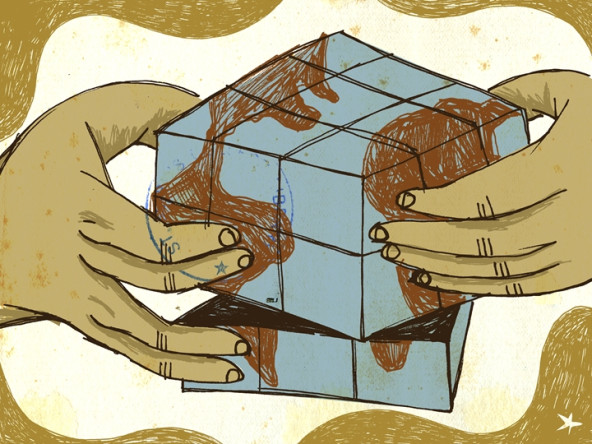 (Image courtesy of Istock)
(Image courtesy of Istock)
At a time of rising nationalism and cutbacks in foreign aid in countries around the world, philanthropists play a critical role, not just in providing money, but in fostering cooperation and goodwill between people and nations. That was the consensus outlook of a group of philanthropists who gathered at a salon held at Stanford PACS’ Philanthropy Innovation Summit at Stanford University on Sept. 19, 2017.
The salon, Globalization and Giving, was hosted by Simone Coxe, a member of the Philanthropy Innovation Summit Host Committee. I moderated a panel with Lata Krishnan, founder and chair of American India Foundation, and CFO of Shah Capital Partners; Jaff Shen, CEO of Leping Social Entrepreneur Foundation; and Anja Manuel, author of This Brave New World: India, China and the United States, and an affiliate of the Stanford Center for International Security and Cooperation.
The critical role that philanthropists play globally can be seen in the response to the two hurricanes that recently swept over the Caribbean. Government relief—whether from the United Kingdom or the United States—has been inadequate to the task, and philanthropists have stepped into the breach. Virgin Group founder Richard Branson is playing an important role in galvanizing aid for the British Virgin Islands, where he has a home, and private equity investor Orlando Bravo has pledged $10 million in aid for his native Puerto Rico.
Philanthropists and NGOs have also played a critical role in many other areas around the world. Take global health, for example. Organizations such as the Bill & Melinda Gates Foundation, GAVI, and the Global Fund to Fight AIDS, Tuberculosis and Malaria have helped reduce the number of people dying from malaria by 60 percent between 2000 and 2015, and since 1990 have helped cut in half the number of children worldwide who die before age 5.
Are you enjoying this article? Read more like this, plus SSIR's full archive of content, when you subscribe.
Fortunately, philanthropy is on the rise around the world. In China, for example, there has been a dramatic increase in giving by the newly-minted wealthy. Take the example of Jaff Shen from Leping. Most of Leping’s giving takes place inside of China, where the foundation has funded many social entrepreneurs and social enterprises. But Leping also gives money outside of China, helping, for example, to create a network of social entrepreneurs in East Asia who can exchange ideas and lessons learned.
There is also a growing amount of philanthropy by diaspora populations, such as Indians living in the United States. Much of their giving goes to domestic issues in their adopted country, but a growing amount goes back to India. Lata Krishnan is a good example. She first became interested in giving back to her birthplace following the devastating earthquake that struck Gujarat in 2001. Frustrated by how difficult it was to provide aid to India from the United States, Krishnan formed the America India Foundation. By overcoming the legal obstacles to giving abroad and by vetting Indian nonprofits, the foundation makes it much easier for Indian-Americans to give to India.
At the same time that philanthropy is growing globally, there are efforts afoot by a growing number of governments to restrict cross-border giving. China, for example, recently passed new laws making it more difficult for foreign philanthropist and NGOS to operate in the country. India has also selectively cracked down on foreign philanthropists, as have other countries such as Egypt and Russia. While these efforts are real and concerning, Anja Manuel believes that the long-term trend is toward greater interdependence among nations and peoples, not less. And that the result will be a growing network of philanthropists and NGOs, working closely with governments and business, to solve the world’s problems.
Support SSIR’s coverage of cross-sector solutions to global challenges.
Help us further the reach of innovative ideas. Donate today.
Read more stories by Eric Nee.

